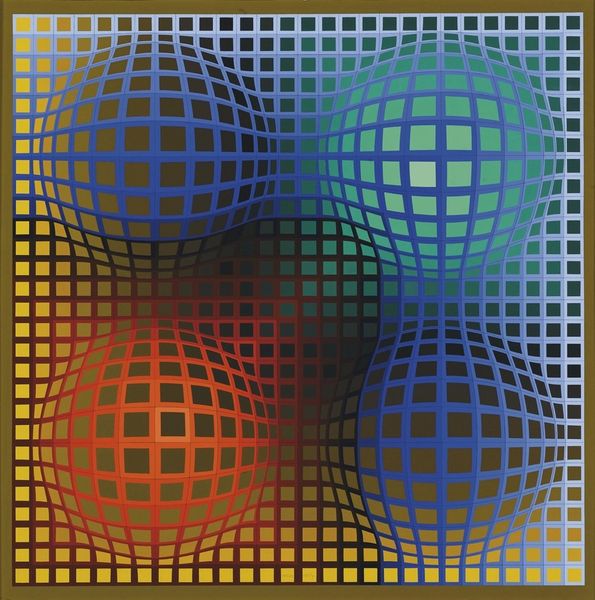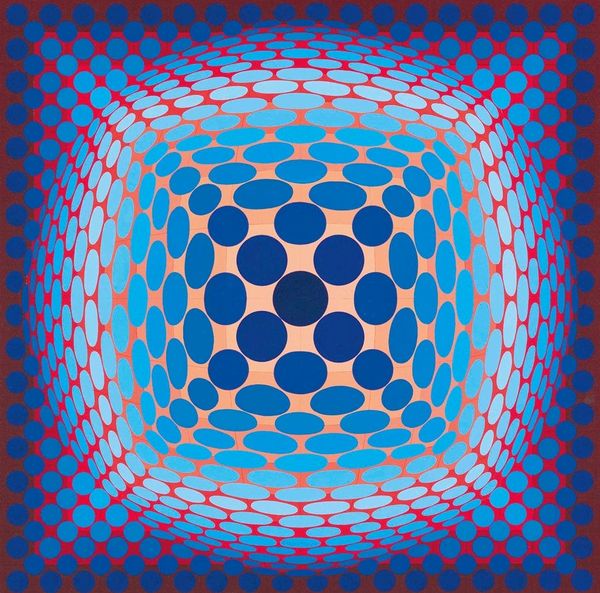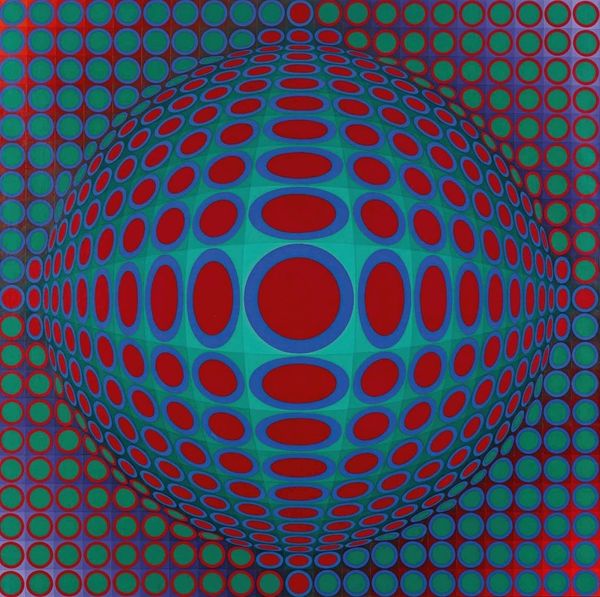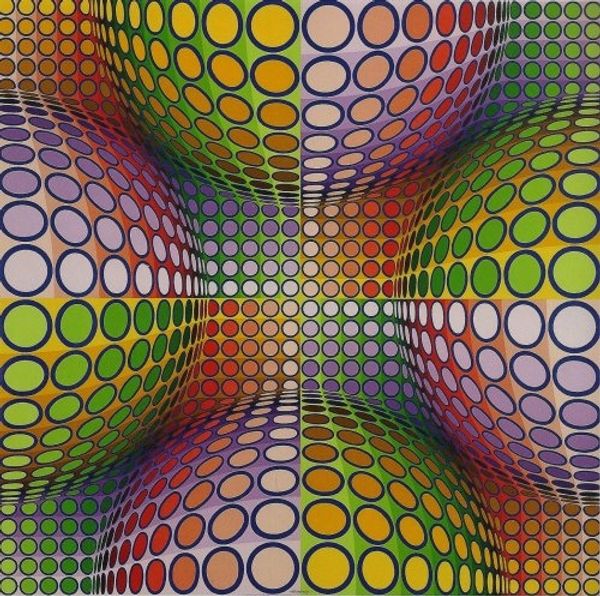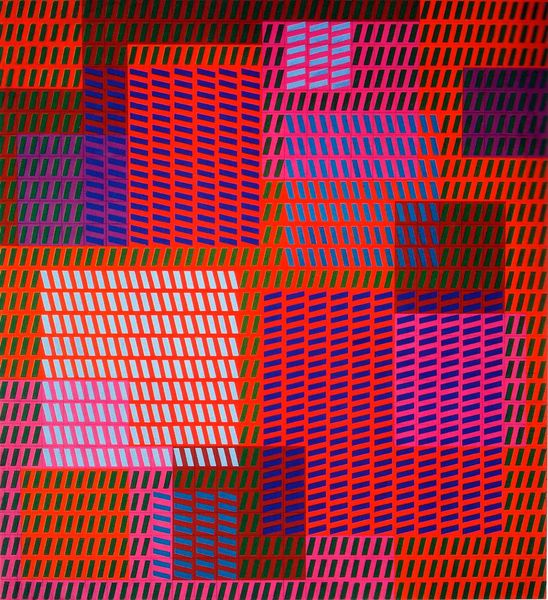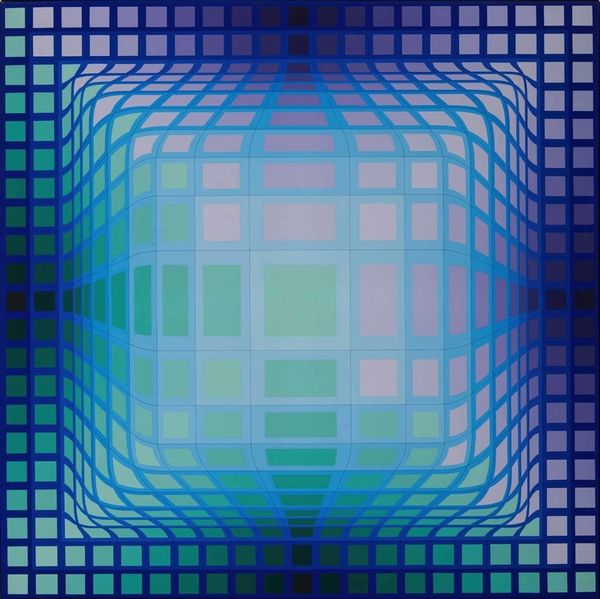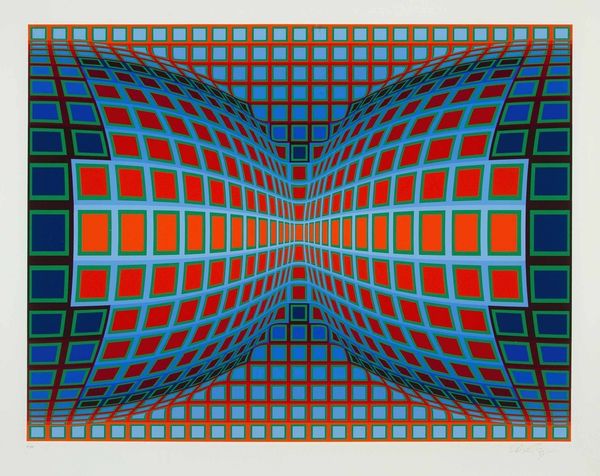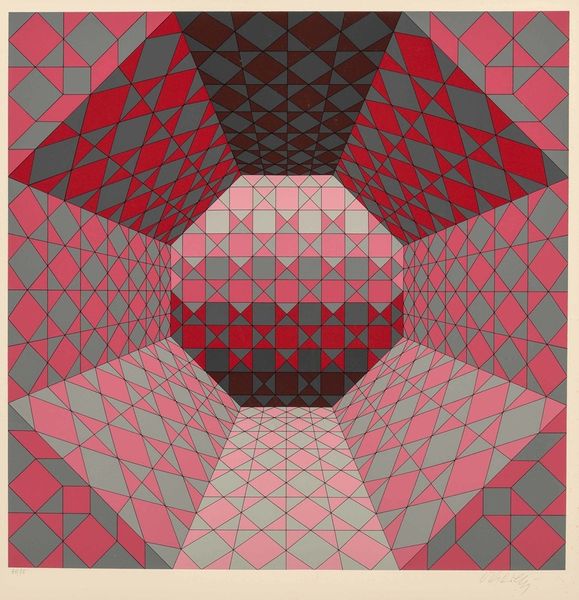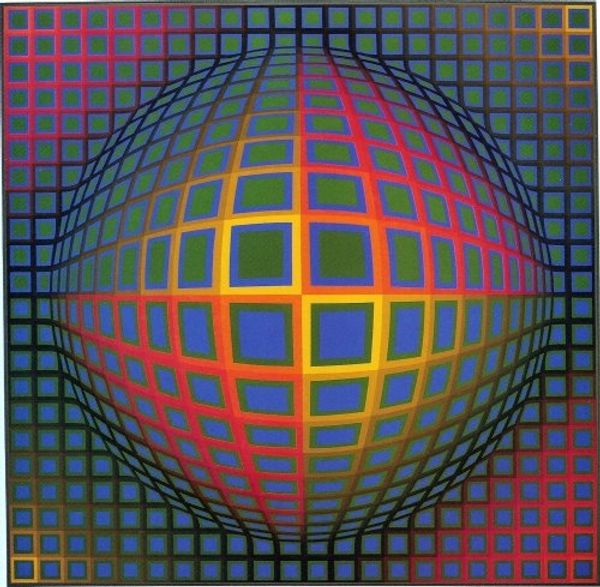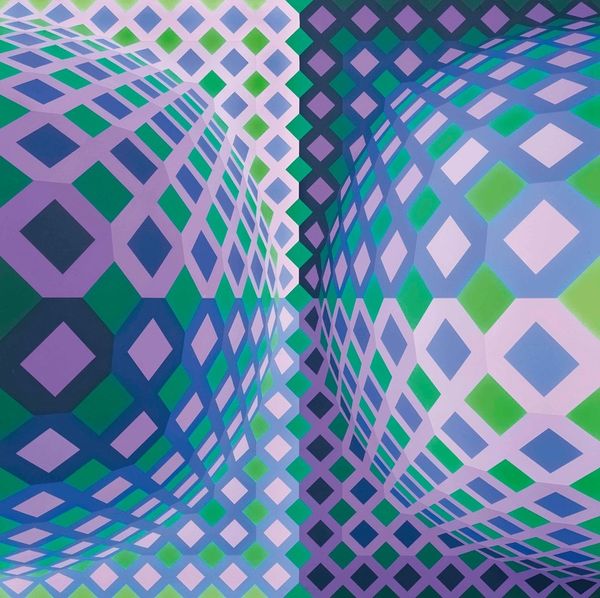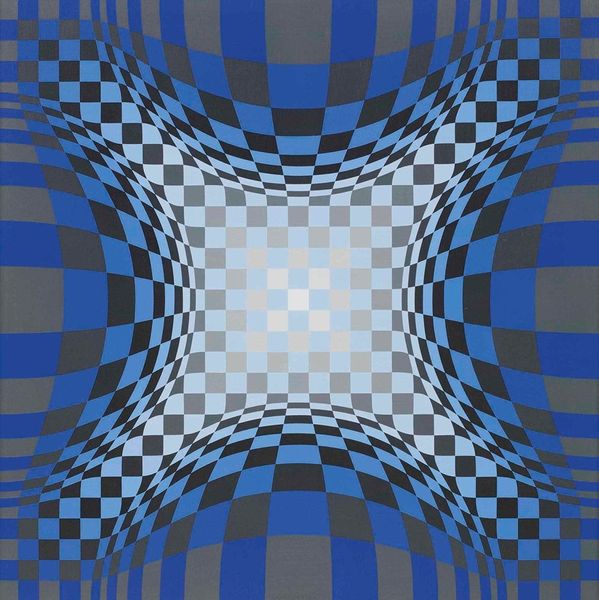
acrylic-paint
#
random pattern
#
op-art
#
acrylic-paint
#
abstract
#
geometric pattern
#
abstract pattern
#
minimal pattern
#
organic pattern
#
geometric
#
repetition of pattern
#
vertical pattern
#
abstraction
#
pattern repetition
#
layered pattern
#
combined pattern
#
modernism
Copyright: Modern Artists: Artvee
Curator: Victor Vasarely’s acrylic on canvas, Vilagos, created in 1971, immediately grabs your attention with its calculated manipulation of geometric shapes. Editor: My first impression is dizziness, frankly! It feels like looking into a vortex. Those shifting colors and distorted grids create a strong sense of unease and disorientation. Curator: That is precisely the point, I believe. Vasarely masterfully employs color and form to challenge our perception. Notice the interplay between the squares on the left and circles on the right, separated by a vibrant spine. It is a perfect embodiment of Op Art. Editor: Right, the clean lines and geometric precision typical of Op Art. But let’s consider the context of the period. 1971, amidst social upheaval and challenges to traditional hierarchies. Is it possible to view this not merely as an optical trick, but a visual metaphor for societal instability, the ground shifting beneath our feet? Curator: A valid interpretation, although I'd argue the work primarily explores perception and the inherent tension within formal structures. The colours and gradients operate under a very strict optical logic, there are no revolutionary statements embedded. Editor: Even the colour choices—those softer hues of periwinkle, peach, and green offset by vibrant red and blue—feel deliberate, creating an unsettling contrast that pulls at your senses. It is as if Vasarely is forcing a dialogue, maybe on themes like conformity and progress. This was created at a turning point, both in art and contemporary history. Curator: While I appreciate the broader sociocultural reading, I am hesitant to interpret that intention from the work itself. Isn’t it just as potent as an abstract exploration of depth and perspective, a testament to visual sensation over substantive messaging? It seems perfectly in line with semiotic structuralism as well. Editor: Perhaps both readings can coexist. "Vilagos" can exist as an impressive display of formal technique, while also sparking important questions of instability, or at least an illusion thereof. Curator: Indeed. Perhaps that ambiguity is where the work truly finds its power. Editor: Food for thought, a dazzling combination of formalism and contextual relevance.
Comments
No comments
Be the first to comment and join the conversation on the ultimate creative platform.
